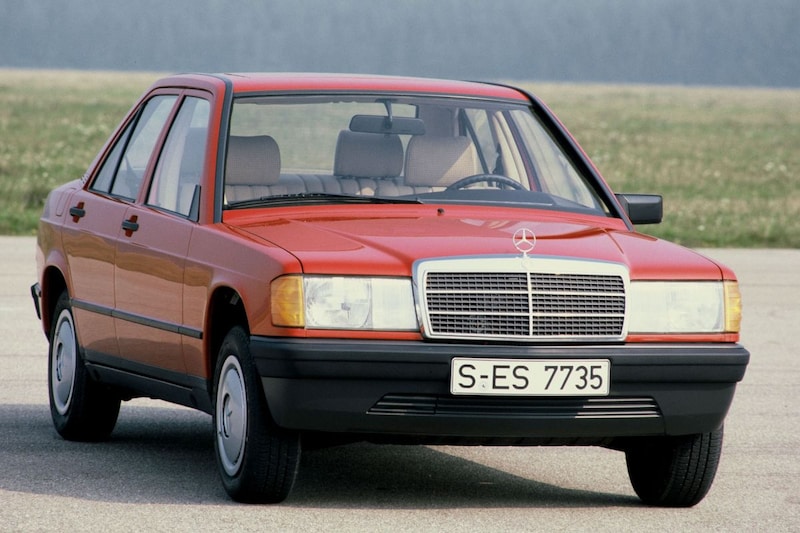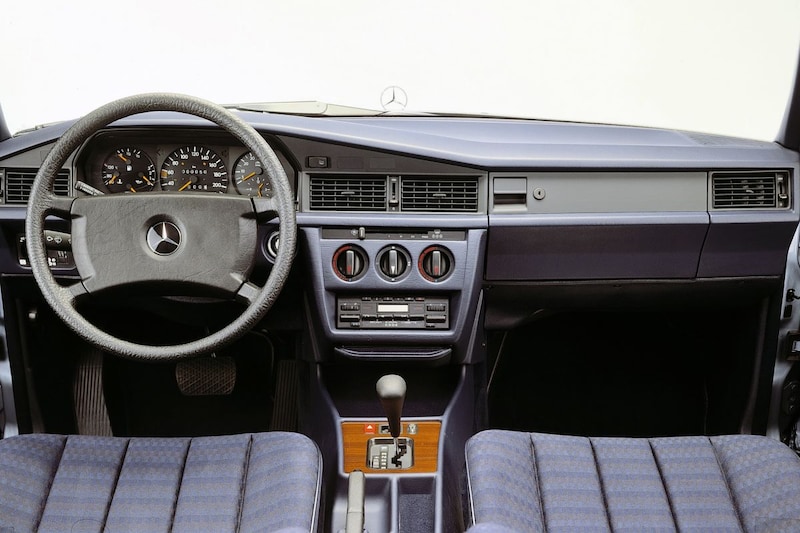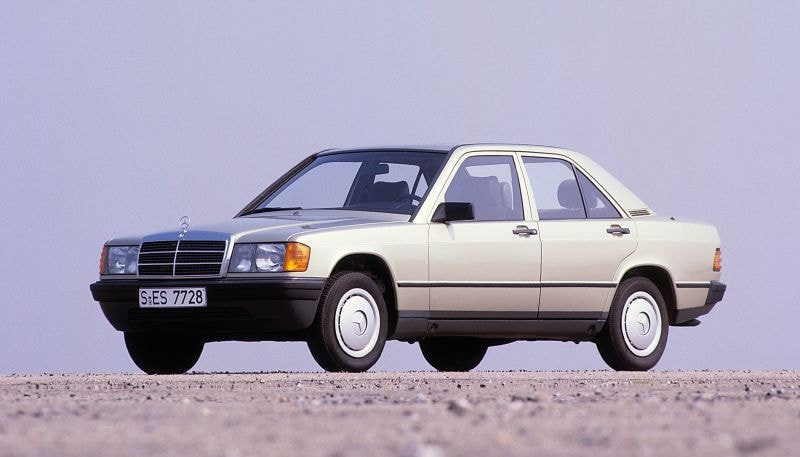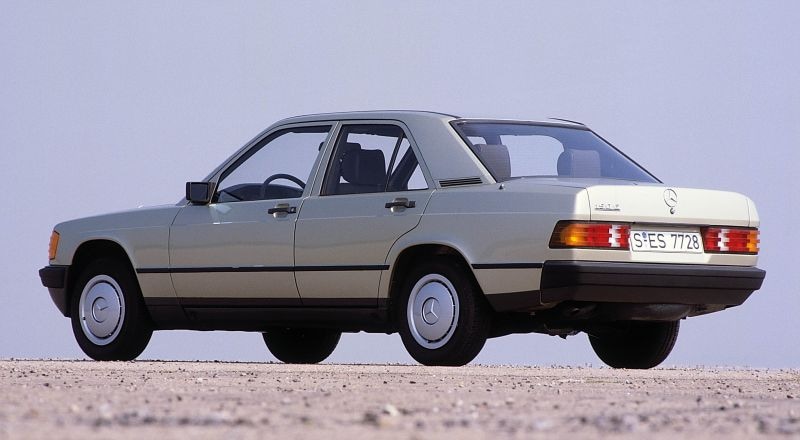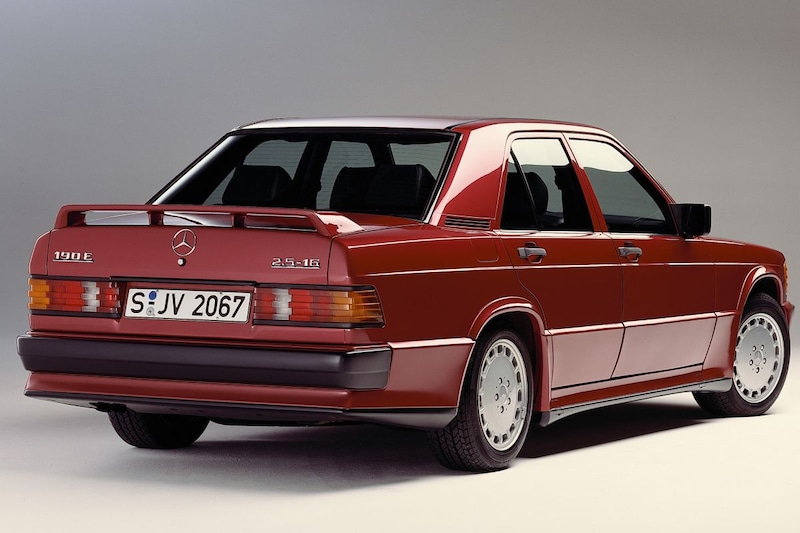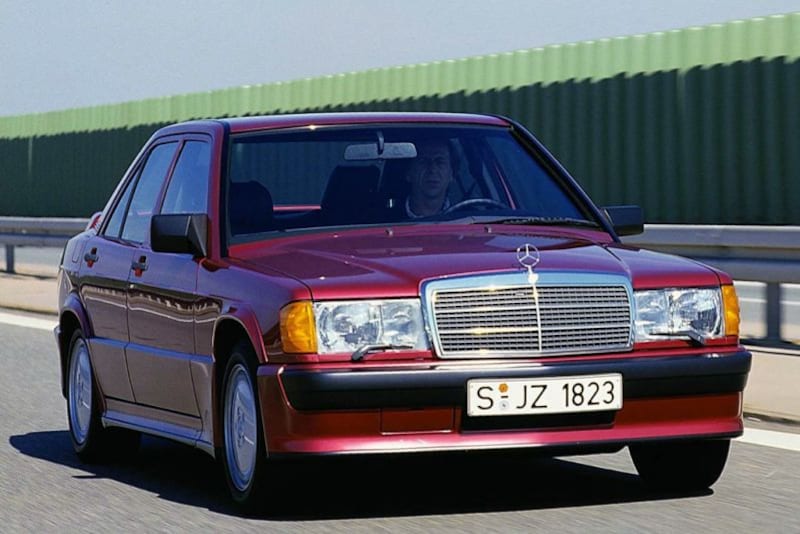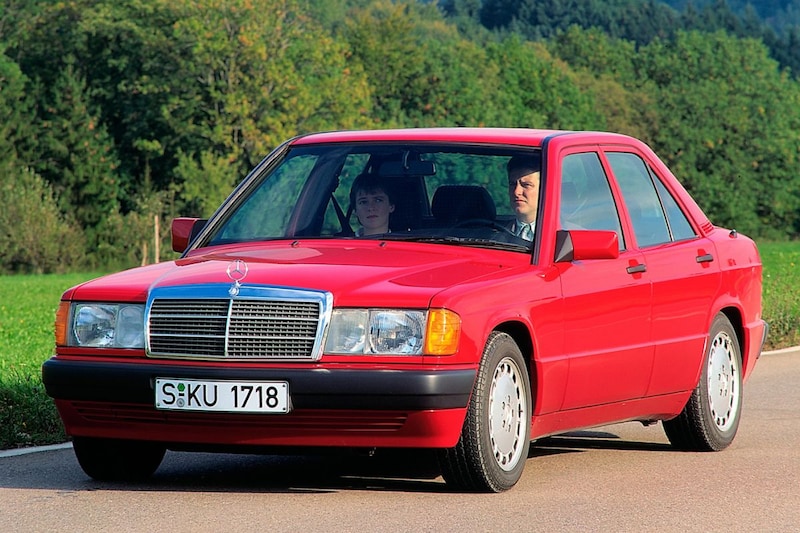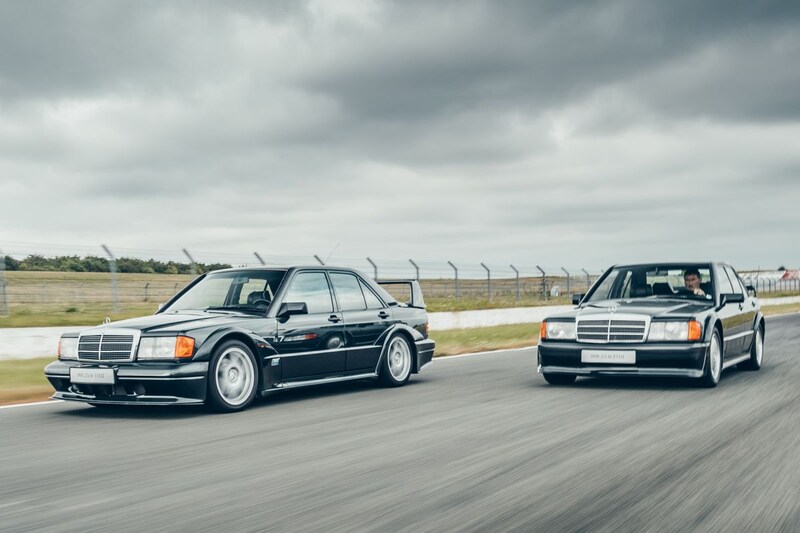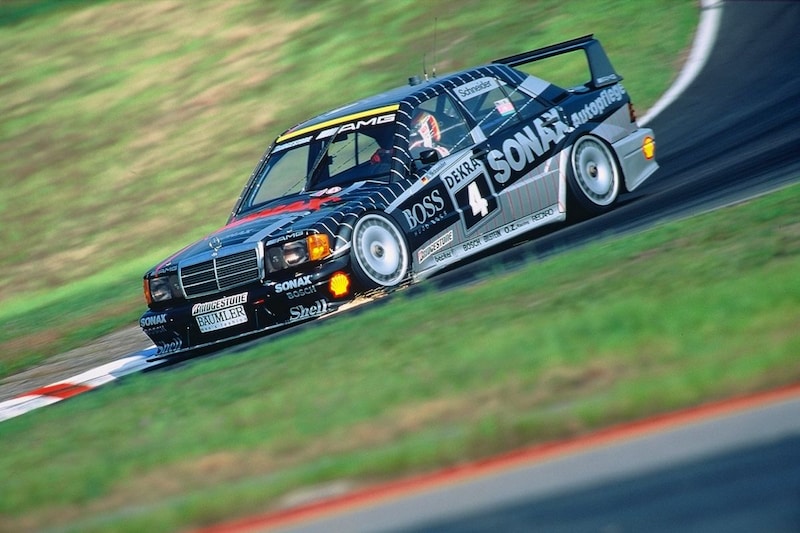How revolutionary was the Baby-Benz?


In the Top Year 1982 series, we look back at the glorious careers of various high-profile models that were presented that year, this time with the Mercedes-Benz 190.
How revolutionary was the Mercedes 190?
As early as 1972, the guidelines for the model under the 200 series were put in writing, followed by the so-called ‘Lastenheft’, the bulky book in which all dimensions, weights and safety requirements are recorded. In 1974, the compact Mercedes is assigned its so-called Baureihe code 201. Still, it takes until 1977 before project W201 gets the final green light. The 190 will prove to be one of the most challenging developments facing engineers. It must meet the same comfort and safety requirements as the S-class, with a weight of up to 1,100 kilograms.
 That turns out to be a major challenge; in particular, head of development professor Breitschwerdt fights for every gram. In addition, the car will have a revolutionary chassis, which would become the benchmark for future model generations of the brand. Even today, all Mercedes models (and many competing cars) use the W201’s so-called spatially oriented rear suspension. The styling is a landslide by Mercedes standards, especially since virtually no chrome ornaments are used except for the traditional grille. The 190 therefore looks extremely sober. Unlike a few of its competitors, the design department led by the Italian Bruno Sacco (photo) does not sacrifice everything for a minimum Cw value, the buzzword in the 80s. For example, the 190 has thick rainwater guides next to the windscreen and its wing mirror rectangular in shape. The solution to achieve a Cw value of 0.33 is in his stern with the truncated trunk.
That turns out to be a major challenge; in particular, head of development professor Breitschwerdt fights for every gram. In addition, the car will have a revolutionary chassis, which would become the benchmark for future model generations of the brand. Even today, all Mercedes models (and many competing cars) use the W201’s so-called spatially oriented rear suspension. The styling is a landslide by Mercedes standards, especially since virtually no chrome ornaments are used except for the traditional grille. The 190 therefore looks extremely sober. Unlike a few of its competitors, the design department led by the Italian Bruno Sacco (photo) does not sacrifice everything for a minimum Cw value, the buzzword in the 80s. For example, the 190 has thick rainwater guides next to the windscreen and its wing mirror rectangular in shape. The solution to achieve a Cw value of 0.33 is in his stern with the truncated trunk.
What were the 190’s competitors?
Due to its high purchase price, the Mercedes 190 has competitors from a higher segment. Think of the BMW 5-series, Audi 100, the Ford Granada (later the Scorpio), the Toyota Camry, the Opel Rekord (later Omega), Commodore and Senator, the Alfa Romeo Alfa 6 and the Peugeot 505. Also the Citroën CX comes into the picture here. Due to its attractive lease rates (because of the extremely low depreciation), the 190 also attracts business drivers from lower classes, such as the Alfa Romeo 75, Ford Sierra and Audi 80. Naturally, the BMW 3-series is the obvious competitor.
The BMW 3 Series E30 was also presented in 1982. The deadly competitor of the Mercedes 190.
How was the Mercedes 190 received?
The dealers are in turmoil, so curious is the public to see the 190 in person and to take a test drive in one of the scarce demonstration models. However, many are disappointed: in the sober appearance, the interior space (especially the rear legroom), the sky-high price that is several hundred guilders below that of the cheapest 200 and the very bare equipment. It does not want to go smoothly with sales in the first year. As if the public has to get used to the 190. After the hesitant start, however, the delivery locomotive gets going, with long delivery times as a result. Suddenly the 190 is even a real object of speculation.
What were the choices at the market launch?
The choice is certainly not huge when the 190 arrives in early 1983. There is one body style, the four-door sedan, and two petrol engines are available: the 190 with the tweaked two-litre four-cylinder from the 200 producing 90 hp (carburetor) and the 190E (injection) delivering 122 hp. It takes until the end of 1984 before the whisper diesel makes its appearance. The 72 hp four-cylinder is brand new and contributes strongly to the sales success. At the same time, the 190E 2.3-16 makes the hearts of enthusiasts beat faster. Only in 1985 does Mercedes add more powerful engines: the 2.3 and the 2.6, as well as the D 2.5 and D 2.5 Turbo. Strikingly and to the disappointment of many, no other body variants are ever available. Although Mercedes is experimenting with a few convertibles and a three-door, they do not make it to the production stage.
Which version appeals most to the imagination?
Undoubtedly the 190 E 2.5-16 Evolution II. This over the top spoilered 190 Mercedes built only 500 times and that guarantees a classic status with a corresponding price tag. Although the regular 190E 2.3-16 and 2.5-16 do not enjoy the status of the BMW E30 M3, their values are also rising rapidly. The 2.3, 2.6 and 2.5 D Turbo benefit from that popularity.
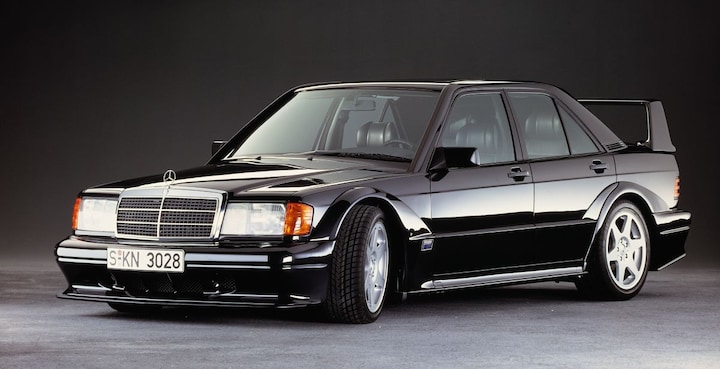
Mercedes-Benz 190 2.5-16 Evolution II, some copies now cost more than 400,000 euros.
How was the 190 received by consumers?
As curious as the intended consumer is when the 190 arrives at dealers, it is as quiet as it is when an order form has to be filled out. The consumer is adopting a wait-and-see attitude. In Stuttgart people are terrified of a flop from top to bottom. The 190 has become much more expensive than the expected 30,000 guilders. The extremely expensive development (of the rear axle alone, dozens of variants have been drawn, built and tested) has pushed the list price up. The sober appearance, the meager standard equipment and the minimal legroom in the rear also deter potential customers. The 190 needs at least a year to get up to speed, but then all brakes are released, helped by the spectacularly low lease rates when the economical and quiet 190D joins the ranks. The 190 would remain popular throughout its long life. Its successor, the C-class, only appeared in 1993. In the Netherlands, the dealers, together with the parallel importers, sell 47,093 units. And did you know that the 190 has been one of the most popular import youngtimers for years?
Any details during his life?
With the 190, Mercedes is introducing a sporty variant with skirts and spoilers for the first time: the 190E 2.3-16. The engineers left the development of the cylinder head to the British Cosworth. To prove the engine’s qualities, the 2.3-16 shatters all long-distance records on Italy’s Nardo circuit. In 1984, the PR department sends a whole platoon of F1 drivers onto the circuit for a demonstration race to promote both the 2.3-16 and the renewed Nürburgring. This culminates in a titanic battle that the promising Ayrton Senna clearly wins. During the entire production period, Mercedes tinkered with the 190. In 1985, for example, he got the crank wiper, 15-inch wheels, power steering and a right-hand outside mirror as standard. In 1988 the major facelift follows, recognizable by the plastic side plating and the improved seats. In 1990 the 190E 1.8 replaced the 190 with carburettor.
What has been the impact of the Mercedes-Benz 190?
The 190 has instantly changed the face of the traditional Mercedes-Benz. Its chromeless, yet very smart and practical shape (“Like a cut diamond”, according to Sacco) has served as a model for the W124, the SL and even the S-class W140. The 190 has also played a pioneering role in technical terms. Its rear axle construction has been copied many times and the basis also serves the current Mercedes. Even the controversial wiper construction has been imitated. His most important role, however, has been the democratization of Mercedes-Benz. However, the impact would have been even greater if Mercedes had built a station wagon, a coupe and a convertible.
How many were built and how many are left?
Between 1982 and 1993, 1,879,629 190s were built in Sindelfingen and Bremen. Of these, 47,093 appeared on Dutch roads. In 1986, when Mercedes celebrated its 100th anniversary, the importer managed to sell the most 190s: 6,075. According to CarTalk International, there are now 5,241 on a valid license plate. 1982 7 1983 309 1984 552 1985 7351986 956
1987 348
1988 251
1989 348
1990 422
1991 450
1992 587
1993 8
source: cartalk international
Mercedes-Benz 190 D from 1988. From that year there are still 251 on Dutch registration.
.
– Thanks for information from Autoweek.nl
